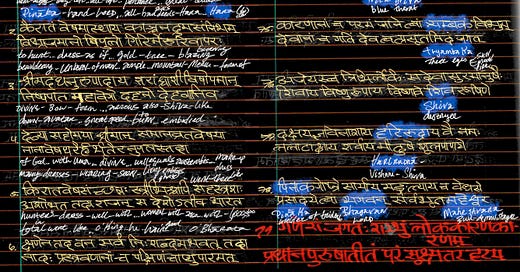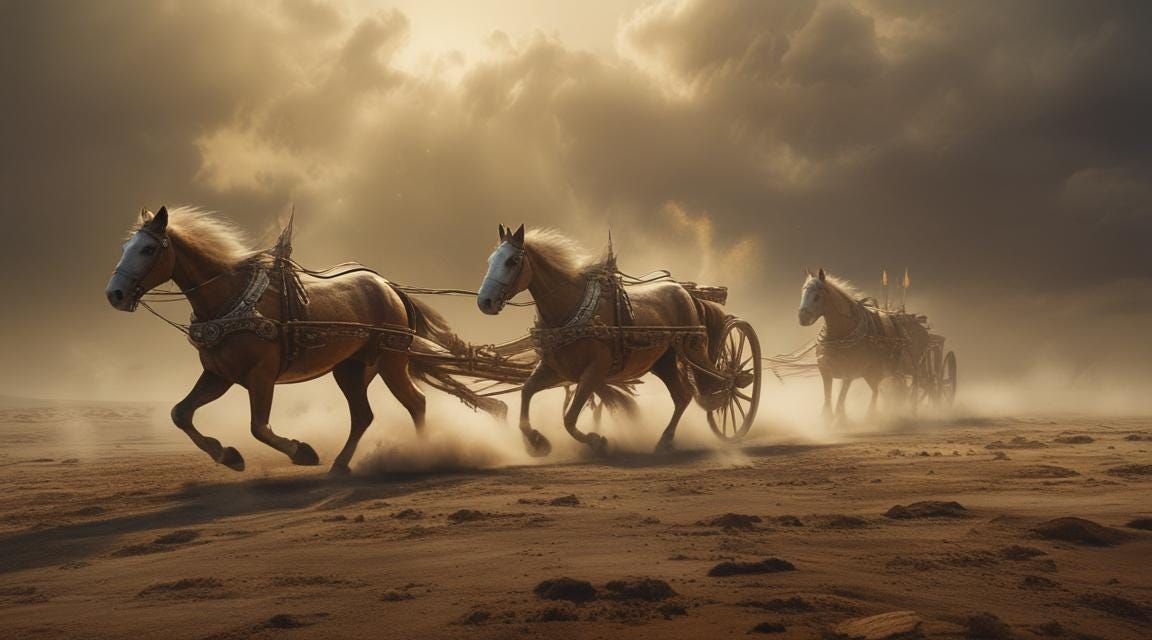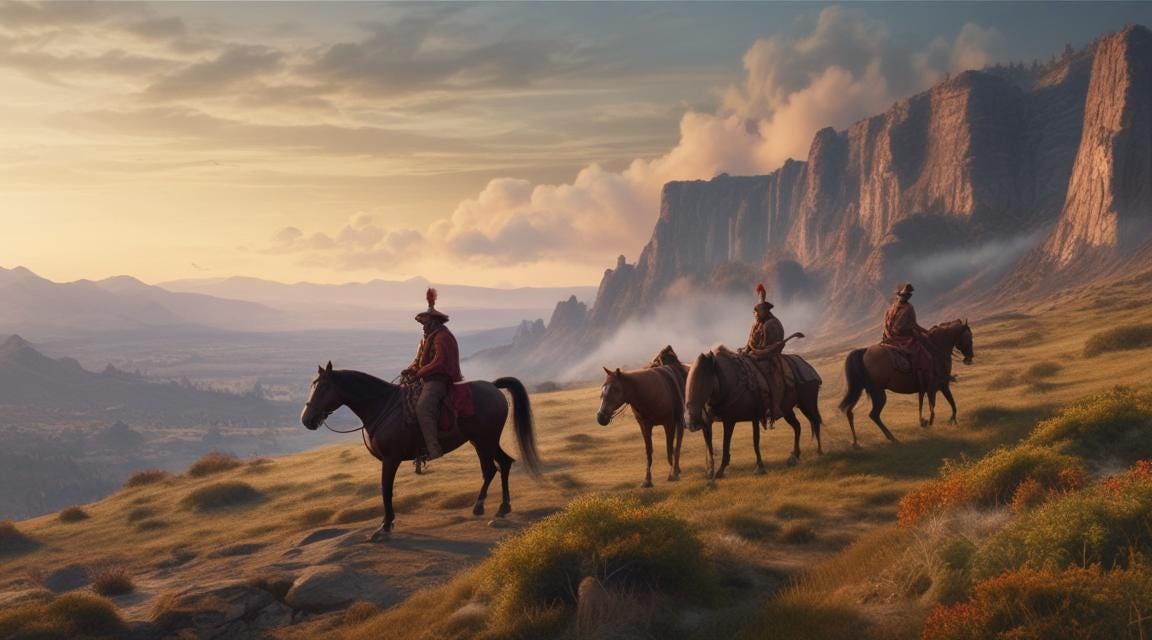https://crackpot.substack.com/t/kirata
Vishnu & Shiva’s names
As mentioned in order - highlighted in blue
Pinaka
Means wielder of the trident. Shiva’s weapon.
Hara
A name for Vishnu
Nilagriva
Blue throat. Shiva’s throat turned black, or blue, when he drank anti-ambrosia.
The origins story of life on earth in the Hindu origin story echoes the scientific story of a primordial ocean. The Gods churn the ocean with an inverted mountain and a mythical snake - from this churning life-giving substances, ambrosia, emerges - and life archetypes such as Ucchaishravas the horse.
Tryambaka
Means three eyed. The sun and moon are Shiva’s two celestial eyes. Fire is Shiva’s third eye. Shiva’s throat is the sky, which is black or blue.
Hari Rudra
Rudras are forms of Shiva
Bhagavan
A generic title for Lord or God.
Maheshvara
Another of Shiva’s derivations that mean great lord.
Words or letters sometimes blend into a verbal synesthesia for me. Sometimes the way letters in a language look has an aesthetic. Every name is beautiful in some way in its look and shape.
Vishnu and Shiva both have many names,. Here are a few in blue from the story when Arjuna and Shiva duel as Shiva wears the clothes of a hunter after incarnating on earth.
Learn by AI?
I read the other day young find books impenetrable. They need visual aids, pictures and short reads similar to what the screens they have learned on to digest information.
Crossing Streams Haiku
When the call ends... stop!
It may mean your share is done.
Or you a played part.
I generated this AI art prompt from the biography of Chief Joseph White Bull of the Sioux. The above scene is White Bull’s father Makes-Room kept him from his first warpath. White Bull’s father led the horses around the other side of the mountain and stayed there smoking his pipe all day. At sundown he returned with a cock and bull story about the horses taking off and only catching up to them after they almost made it home. When the warriors rode out that day, they left White Bull on a hillside without a ride. All-time Dad move by Makes-Room.
In studying Native American - Anglo history. The conventional history of the United States demarcates 1860-1865 as Civil War. Really the period of Civil War stretched from immediately after the American Revolution to the beginning of the 20th century. In included the war over slavery, but it also included the victorious Americans beating up and breaking down the formerly aligned tribal nations of the British and French. The real Civil Wars of America - meaning specific places were literal war zones in the continental United States - ran right from inception until the early 20th century. Today the native populations still live in isolated and impoverished reservations. Attempts at assimilation have ended up as projects of erasure and lethally destitute provisioning of resources.
Staying specifically to the narrow issue of racial slavery, the fight for political rights continued well after the Civil War until today. It’s come out that the Nixon era architects of the modern war on drugs was consciously designed as a tool to police (disrupt, atomize, disarm) minority communities. Nixon wanted to turn the screws on them blacks and jews. These conversations were a counter reaction to Civil Rights, which themselves were a win against Jim Crow and Plessey, which were established in the aftermath as counter-reactions to slavery emancipation. Today the machinery of that oppression remains in place, tilted by design toward its targets even in the hands of well intentioned and honest individuals.
The spaces within modern America were war zones for the first century and a half of the United States history. The outbursts of violence we see today echo that terrible legacy.
Evolution of language expands our capacities for finding peace.
Thus ends the As It Rhymes meditations on Shiva’s Kairata Mahabharata
Sample outtro track
Vestal, Stanley, and Michael Taylor. Warpath: The True Story of the Fighting Sioux. Books In Motion, 2002.





